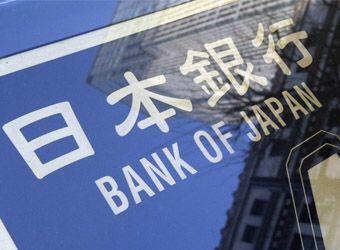The Bank of Japan (BOJ) has kept policy unchanged on Tuesday at the conclusion of its two-day policy meeting, as widely expected.
The central bank maintained the negative 0.1 percent interest rate imposed on banks for some excess reserves, left the 10-year Japanese government bond (JGB) yield target at around zero, and kept annual rises in JGB holdings at 80 trillion yen ($676.9 billion).
The BOJ also upgraded its economic assessment, revising up its views on exports and output, while noting that the economy continued to recover moderately.
Indeed, a string of positive data has bolstered sentiment surrounding the world’s third-largest economy.
The yen’s 15 percent decline against the greenback over the past three months has boosted November export volumes, which hit a two-year high according to data released Monday, and brightened the outlook for manufacturers, as revealed by the central bank’s December Tankan survey last week.
And while inflation remains well below the government’s 2 percent target, the outlook has significantly improved. Large expenditure on public work projects, a part of August’s 28.1 trillion yen fiscal stimulus package, is anticipated to support economic growth from the beginning of 2017 and in turn, prop up inflation.
The Japanese economy will continue to grow above its potential from now, Reuters quoted Governor Haruhiko Kuroda as saying at a press conference on Tuesday. According to Kuroda, the upgrade in the economic outlook reflected better conditions abroad, as well as a pickup in Japan’s exports and factory output.
But risks to the country’s outlook include developments in the U.S. economy and the impact of U.S. monetary policy on global markets, the BOJ said. This week, the Federal Reserve raised interest rates for the second time in a decade and predicted three more hikes next year.
“Diverging monetary policy between Japan and the U.S. could affect the foreign exchange market,” Kuroda noted.
JGBs in focus
“In light of aggressive increases in global bond yields, it’s no surprise that the BOJ held fire today,” noted Jason Ambrose, founder and CEO of Vanda Research told CNBC’s “Street Signs.”
“The bigger problem will be technical factors, i.e when they run out of bonds to buy,” he continued.
JGB yields have been rising in recent weeks, tracking gains in U.S. Treasuries following Donald Trump’s U.S. election victory last month, but the BOJ didn’t seem too concerned about the appreciation.
Kuroda is not considering raising long-term JGB targets just because of gains in global yields, Reuters said on Tuesday, adding that the bank would continue to conduct JGB purchases regardless of duration under the yield curve control.
The yield curve control became a centerpiece of the BOJ’s new policy framework on Sept. 21. At the time, the bank explained that it would buy 10-year JGBs so that the yield would hover around zero percent while keeping a lid on short-term rates. The new mechanism was working well, Kuroda said on Tuesday.
“The long-term JGB target is not a cap or a floor, it’s around zero percent,” Reuters quoted Kuroda as saying.
“In order to achieve 2 percent inflation, the BOJ will try to stick to its zero percent target rate for 10-year JGBs for as long as possible. But if the U.S 10-year yield increases, then the BOJ may be unable to keep the zero percent target next year,” said Daiju Aoki, regional CIO and chief Japan economist at UBS Wealth Management.
An unlikely end to 2016
The central bank has made noticeable shifts in its policy stance in recent months. In September, expectations were sky-high for a fresh round of stimulus but those hopes have been tempered in recent months.
Going forward, the central bank’s policy dynamic could change from easing to tapering as a weaker yen and fiscal stimulus fuel inflation expectations. The fact that the central bank owns large chunks of the bond market already may also limit its ability to intervene, and consequently push yields higher.
“The room for additional JGB purchase has fallen with a 37.9 percent share of outstanding amount in the third quarter, the BOJ could arguably let interest rates rise,” said Kowhai Iwahara, economist at Natixis Japan Securities. But timing will be key, he warned. “A premature rate hike could also increase the risk of a stronger yen, making it more difficult to meet the inflation goal.”
But not everyone believes tapering will happen.
“With inflation expectations in a weakening phase, the BOJ shows no sign of movement toward a taper of its stimulus programs…Until Japan shows signs of a sustained and self-reinforcing cycle of rising wages and consumer prices, the BOJ will leave policy in its current, highly expansionary stance,” said Bill Adams, senior international economist at PNC Financial Services Group, in a note on Tuesday.
Source: Reuters



